Road trip in Northern Portugal: Part one
A weekend in Porto
Porto is both lively and picturesque. The atmosphere was generally relaxed – the Portuguese have a reputation for being laid back. My interactions with locals were always friendly, which isn’t always the case in large and busy European cities.
There is wonderfully varied architecture around the city, including the gothic churches, blue Baroque mosaic tiles, and expressive street art. One of the most striking features of Porto, for me, were the bright clay roofs – particularly when viewed from above. They can be seen from the Luis I Bridge, over the river, in the city centre. Porto is fairly hilly, and the orangey-red tiles layer the backdrop beyond the river.

Wandering the city
The city is carved through the middle by the wide Douro river, that runs to the port by the Atlantic Ocean. You can walk alongside the bustling river’s edge, or wander around the mazy backstreets of Porto, for hours. Another fun way, if edgy, to get around is on a rental electric scooter – as and a friend did – and got spectacularly lost (my fault).
The city is known for its port industry, of course, and a tour of a cellar is popular with tourists. There are countless places to eat and drink, with great options for food. Bacalhau, dried salted cod, is Portugal’s national dish, and seafood is popular around the city. Another dish found in around Porto is Francesinha – there are a few variations of it – and I tried a couple. Although I enjoyed it, to an extent, the most I will say is that it’s an interesting taste, and probably not for everyone.
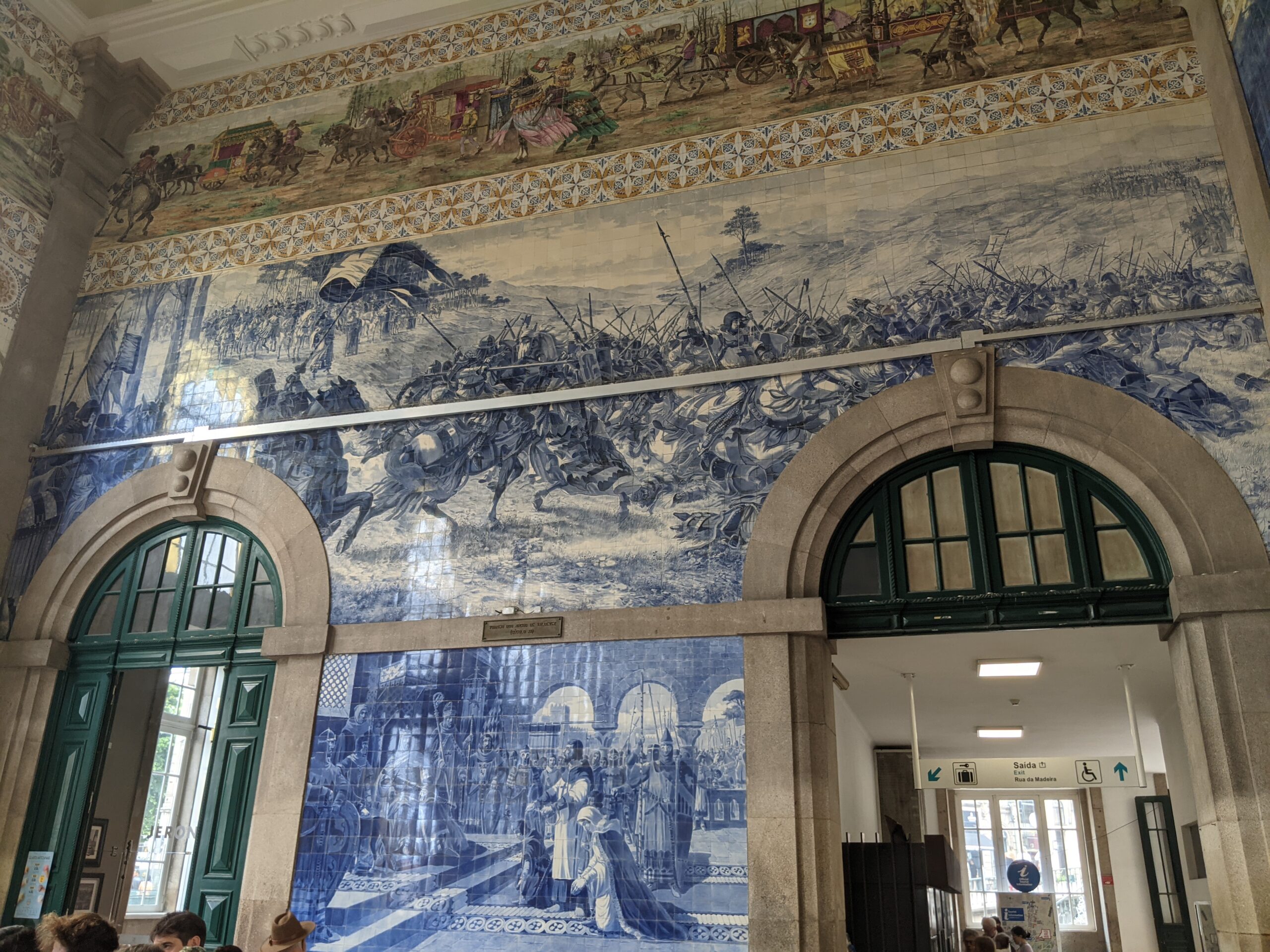





Braga
After the weekend in Porto, it was time to get on the road. I headed north first, to the city of Braga. Although relatively small in comparison, it is full of grand buildings, including a cathedral and many churches. The city walls and cobbled streets contribute to the sense of a medieval city, much of which is enclosed tightly together.
I happened to visit during June and the Festa de Sao Joao (festival of John the Baptist). The evening was a combination of music, dancing, and intriguing religious ceremonies. I witnessed, after dark, under the shadow of the cathedral, a group of girls – some of which were hooded – in a circle, appearing to perform a ritual or initiation. I didn’t stay long enough to witness the sacrifice.





Guimaraes
Along from Braga was the town of Guimaraes. Here, it doesn’t take much imagination to feel back in the Middle Ages. The centre piece is a large, defiant, walled castle. It stands alone, in a mound of grass, above the nearby town – even more impressive, is its durability, given the age of the construction.
After a two-hour walking tour of Guimaraes, the road trip began in earnest. I drove through the Douro valley, the grape-growing region that supports the supply for the copious amounts of wine and port produced there, atop hills peering over the vineyards on the slopes below.


Douro Valley
I drove over tall, extended bridges that connect the hillsides. These impressive feats of engineering keep you high in the sky – above the valleys below – producing panoramic views. Vistas such as these make it a challenge staying focused on the road. Given a lapse in concentration could result in a hundred-metre plunge, it’s best to stop at designated spots, and get out of your vehicle to take in the views safely.
My drive through the Duoro valley was in mixed weather, with spells of heavy rain. I did enjoy a few stops for photos, notably at Amarante and Regua. The latter has three bridges, varying in size and design, that sit nicely behind one another.
The sun only started to shine as I reached the foot of the mountains at Serra da Estrela. It was only a brief reprieve, as over the next two days there were periods of showers in the mountains, some of which was very heavy – not quite the weather I expected in Portugal.
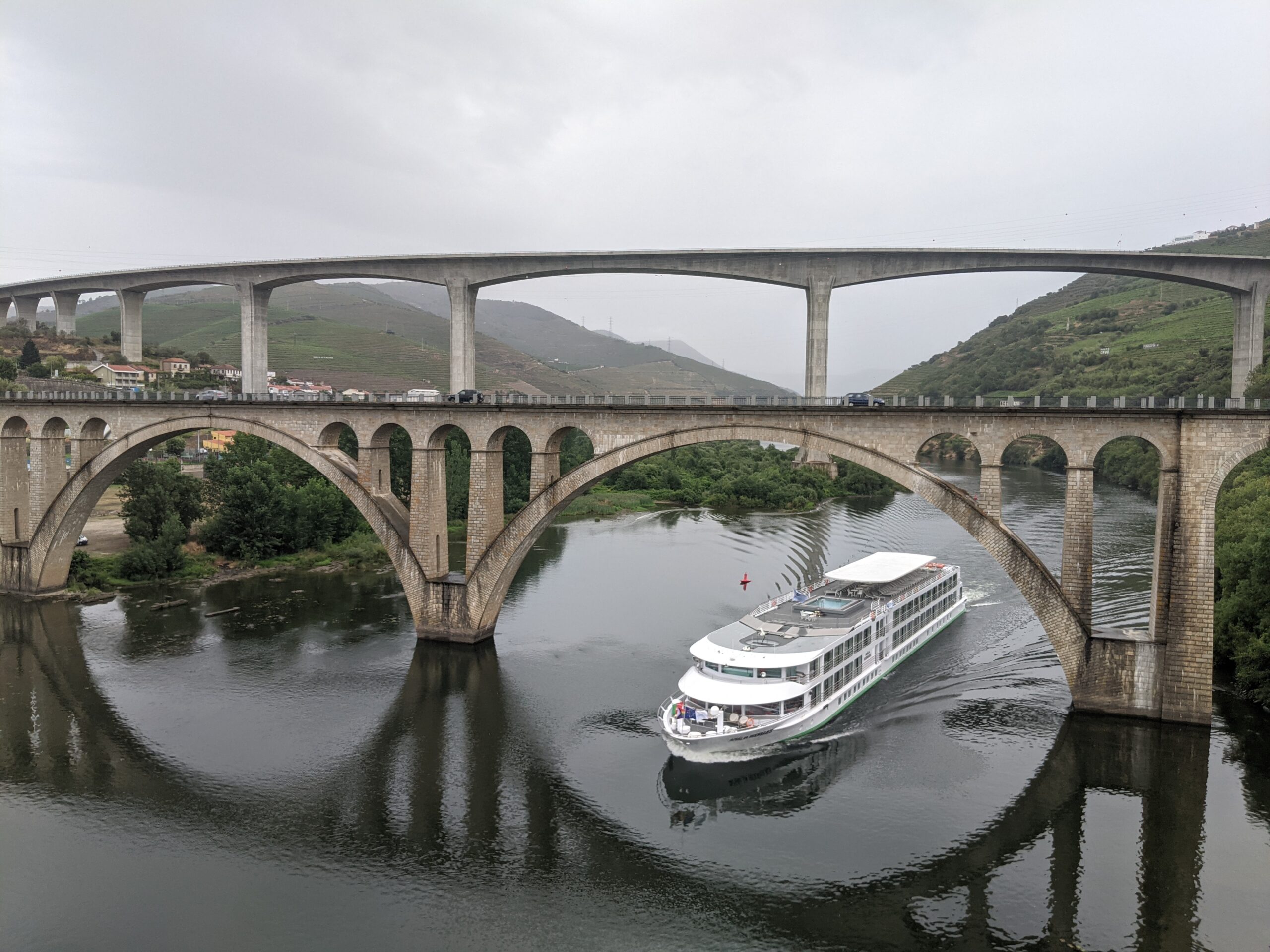
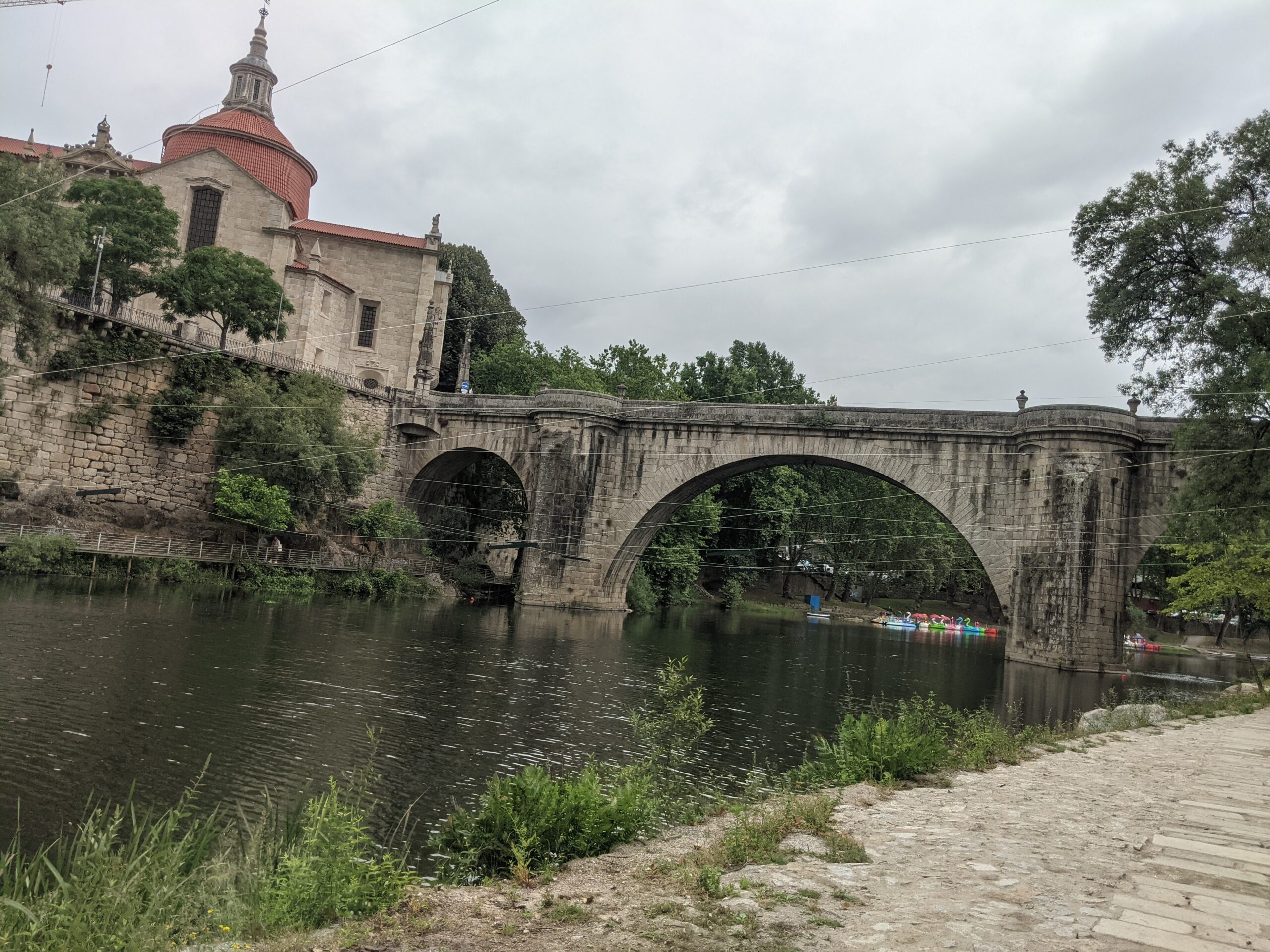
Salto do Lobo
I found fantastic accommodation – Salto do Lobo – a stone lodge nestled around halfway up the mountain range. It is hidden on a side road and offers a quiet to explore the area. It is in the midst of rugged mountainsides, with low-lying bushes and boulders of various sizes.
Directly outside the lodge is a rock pool, but I can’t attest to how cold the water is, as the unusually mild June weather didn’t tempt me to find out. The fresh stream, and the soft trickling of a small waterfall, made this a picture of tranquillity. Inside, the lodge continued in a similar theme, with a rustic design including a built-in stone fireplace, and a charming stairway to the bedroom.
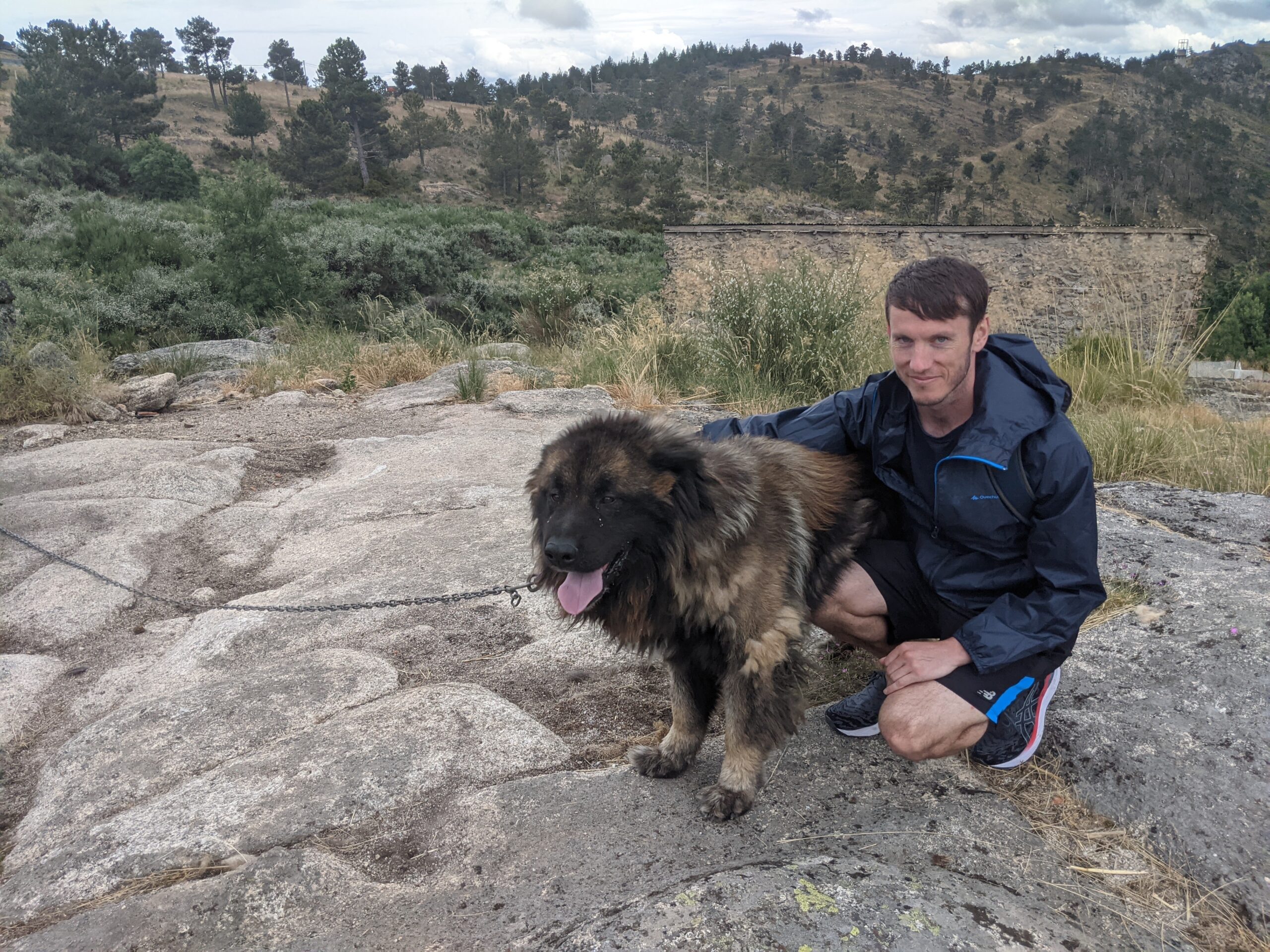


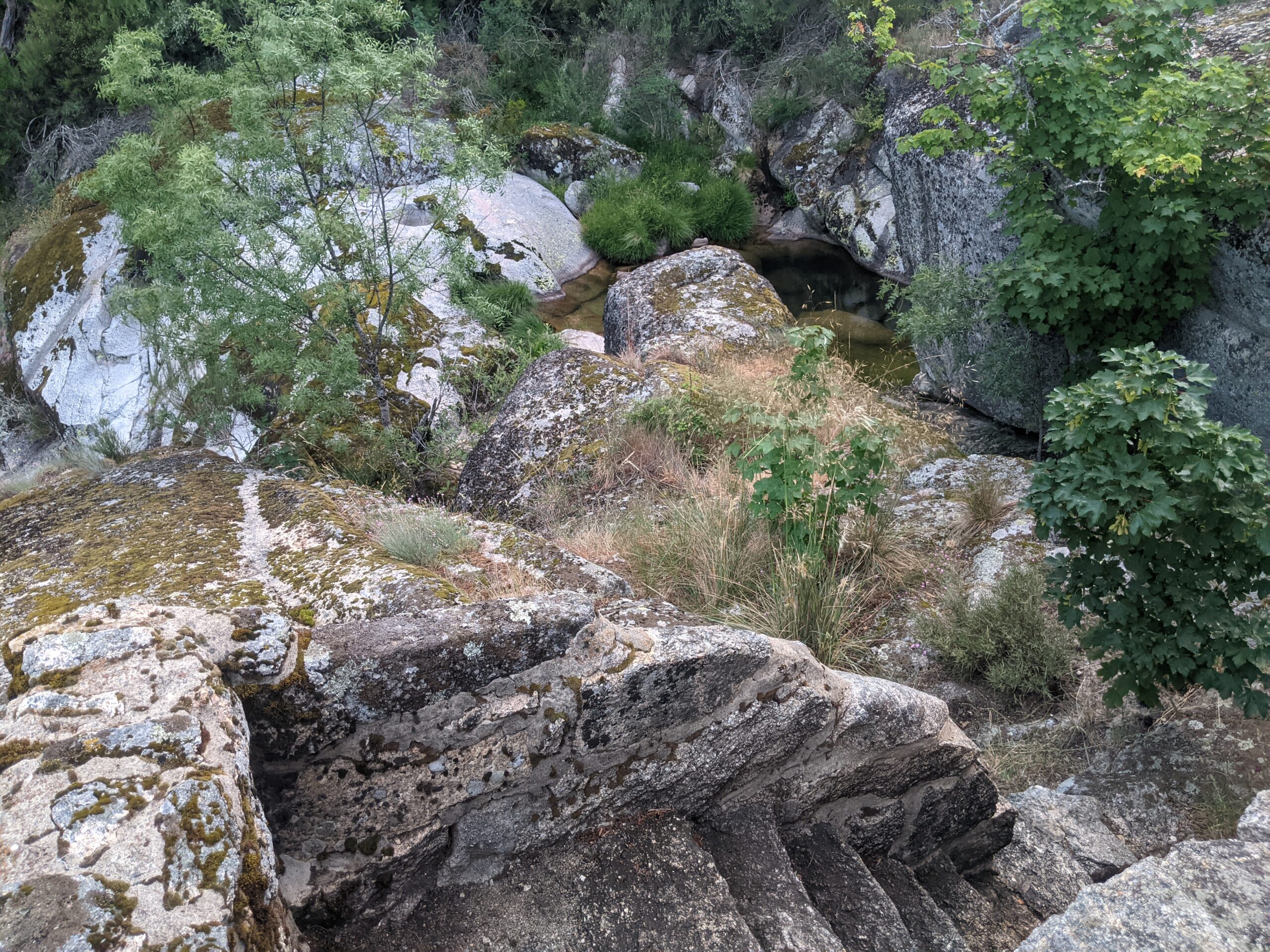
Serra da Estrela
The next morning, I awoke for sunrise. The view outside was blurred by the morning cloud, but impressive nevertheless, and the cold air refreshing. The mist blew over the moorlands My day was put on hold, for soon thunderstorms came, along with heavy rain. The lodge provided a cosy, dry place to relax, read, and wait for the rain to pass. Fortunately, it didn’t last too long – and I had plenty to look forward to on the second half of this trip.
After the rain subsided, around midday, I decided to drive to see the mountains up close. Winding road traverse through the park, offering differing and remarkable views around every corner. Long, wide, valleys alongside steep, sharp, rocky peaks are found all around Serra da Estrela. It was here I set out to hike up into them.


The hike
The mountains, despite the weather, are spectacular. I attempted to hike up one – Cantaro Gordo. The start of the trail was overgrown with long grass and ferns, until it steadily rose. It wasn’t long before the ground morphed into a rocky mirage – the path often concealed by collections of stones that had fallen down the slopes. I lost my way more than once – which I also attribute to the fog that became nearly constant as I hiked higher.
There were glimpses of blue sky – and the views below – when the strong wind moved the clouds. Although there tended to be another cloud following behind, to quickly block the sky again. On a saddle – a short flat ridge – around 350 metres up from the start, I could see my starting point on one side, and on the other, looking towards the middle of the range, nothing but mist.
The path up had very low visibility and light rain was flying into my face. Having heard thunderstorms that morning, I did seriously consider turning back at that point, knowing that benefits don’t outweigh the risks. But even the way down was marred by the bad weather, and I had to wait it out, alone, in the hope of the fog clearing.


